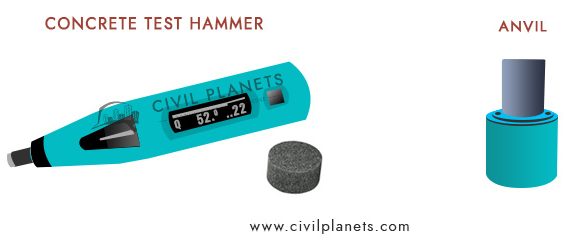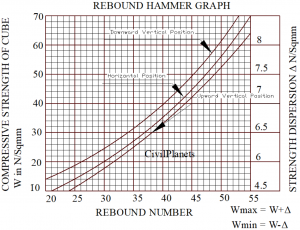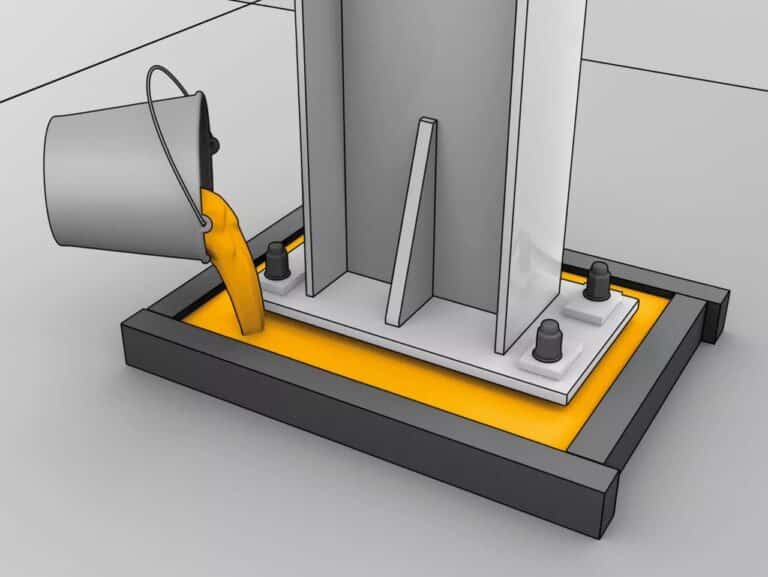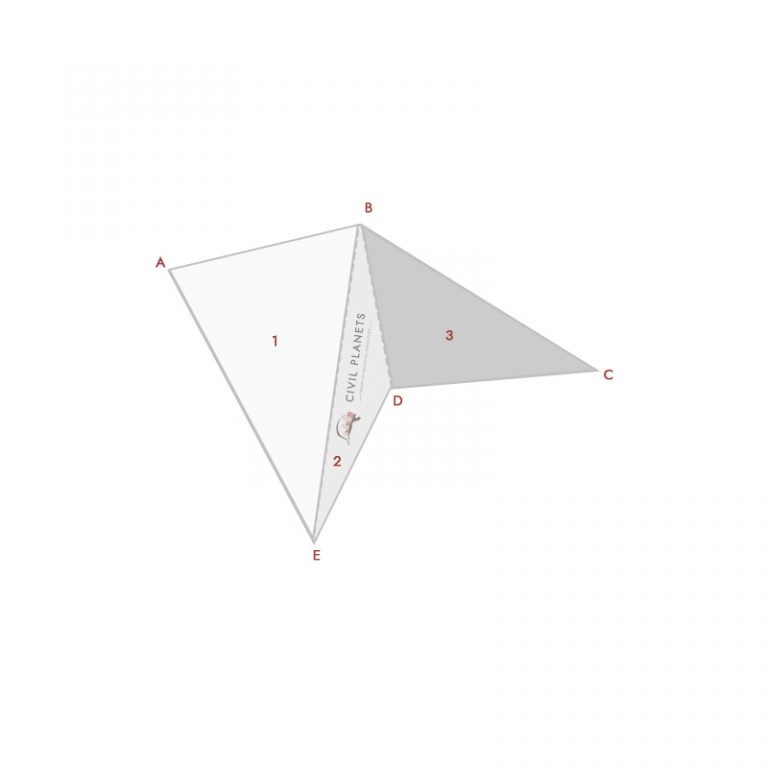Is there any method being used to test the compressive strength of the concrete without destructing?
Yes, there is.
The Rebound hammer test (Non-destructive test) is widely used to determine the compressive strength of the concrete elements, also called as Schmidt hammer test.
We have already discussed some of the destructive tests such as the compressive strength of concrete cube & Tensile strength of concrete cube.
What is the rebound hammer test?
Rebound Hammer Test is a Non-Destructive Test method widely used to measure the quality, uniformity & compressive strength of the concrete.
It is a straightforward test and can get the results immediately without any problematic calculation.
Why is this test required?
Mostly the rebound hammer test is suggested in the following scenarios.
- Need to check the strength of an old structure
- To find out whether an existing building element needs any repair & rehabilitation work to be done.
- When the concrete cube failed during the destructive test method; if there were a large number of samples, we could use the standard deviation of the concrete process.
- When the concrete cube samples have rejected due to the improper cast where you aren’t able to check the compressive strength by the destructive method.
The Rebound hammer test will be performed as per IS Code 13311 Part -2.
Limitations and Correction Factor of Rebound Hammer Test
- Type of Cement – If high alumina cement was used in concrete, it gives 100% higher compressive strength compared to OPC. Simultaneously, if super sulphated cement was used in concrete, it provides a 50% lower value than the OPC in the test.
- Type of aggregates – Different types of aggregates used in concrete will give different correlations between the compressive strength of concrete and rebound number. Special calibration required for lightweight aggregates used in concrete.
- Carbonation of concrete surface – It is an essential factor that impacts the result of the rebound hammer test. The carbonated concrete gives more than 50% higher strength value while testing it.
The process of carbon dioxide from air penetrating the concrete is known as carbonation.
- Surface Condition of Concrete – This test is only suitable for properly compacted concrete and not for partially compacted. The partially compacted concrete does not have uniformity. Moreover, this test can’t be applied to brick masonry and honeycombed concrete surfaces.
Apparatus for Rebound Hammer Test
A rebound hammer test machine is required, as shown in the picture below.

How does the Rebound Hammer work?
It is more like throwing a rubber ball against the wall. If you throw the ball to the hard surface with a high 
Assume the plunger as the ball and the rebound hammer pressure as your hand force and the ball back bounces are rebounds numbers.
The hardness of the concrete & rebound is related to the compressive strength of the concrete. The bounce is measured from the scale, and it is called the rebound number or rebound index.

Procedure
Before doing the test, the rebound hammer should be calibrated through a testing anvil and ensure the result is trusty. The anvil should be steel & having Brinell hardness 5000N/Sqmm.

- Ensure the surface of the concrete was cleaned or rub the surface through the rubbing stone or grinding wheel.
- Now, hold the hammer at a proper right angle to the concrete surface & also avoid the hammer holding at other angles it may impact the results.
- Then, release the plunger, and it hit the concrete surface with some energy to impact the surface and press the lock button. Now note the rebound number from the scale.
- The test should be conducted a minimum of 6 times & average the value.
The impact energy required for rebound hammers for different applications is given in the below table as per IS 13311 part 2.
| Application | Approx Impact Energy required for Rebound Hammer in Nm |
| Normal Weight Concrete | 0.75 |
| Lightweight Concrete | 2.25 |
| Mass Concrete | 30 |
Test Result
The result will be finalized through correlating the value of rebound number and compressive strength of concrete by using the rebound hammer graph.
The accuracy of the rebound hammer result may differ from ±25% to the compressive strength of concrete by the destructive test method.
Report of Rebound Hammer Test
| SI | Date | Test Point | Crushing Value in N/Sqmm | Rebound Number |
| 1 | Point 1 | |||
| 2 | Point 2 | |||
| 3 | Point 3 | |||
| 4 | Point 4 | |||
| 5 | Point 5 | |||
| 6 | Average |
Rebound hammer Graph

From the above graph, you may see the relationship between the rebound number and the compressive strength of concrete. The compressive strength value increases when the rebound number increases.
For example, if the rebound number value is 35 downward vertical position, then the compressive strength value is 31 N/Sqmm.
Generally, this graph is given the backside of the rebound hammer machine so we can correlate the value on that.
The recommended rebound number values are given in the below table to check the quality of concrete.
| Average Rebound Value | Quality of concrete |
| >40 | Very good |
| 30 to 40 | Good |
| 20 to 30 | Fair |
| <20 | Poor concrete |
| 0 | Delamination |
Advantages & Disadvantages
The main advantage of the Rebound hammer test is that it can be applied on the concrete surface by horizontal, vertical downward & upward direction.
| SI | Advantages | Disadvantages |
| 1 | Inexpensive | Regular maintenance required |
| 2 | Helps to find the strength of the old structure | Need to correlate the rebound value to the crushing strength value. |
| 3 | Instant Results | Difficult to find if defects happened in the machine. |



